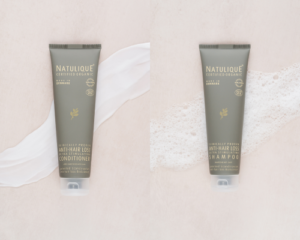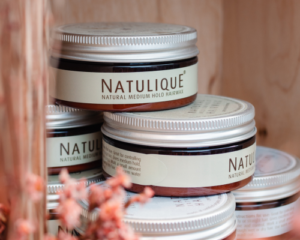"`html
Introduction to coloring and bleaching
Hair coloring and bleaching are beauty techniques commonly used to transform or revive hair color. However, it's essential to understand these processes, including how long to wait between bleaching and coloring, to achieve the best results without damaging the hair fiber. This article aims to clarify these key concepts, ideal for anyone considering changing their hair color.
Definition of discoloration
Bleaching is a chemical process that removes natural pigments from the hair fiber. This technique is mainly used to lighten hair and prepare the base for a new color. During this process, oxidizing agents such as hydrogen peroxide are used to penetrate beneath the hair cuticle and dissolve melanin, the natural pigment that gives hair its color.
Color definition
Hair coloring, on the other hand, involves applying various products to the hair to change or accentuate its color. Depending on the product used, colorations can be temporary, semi-permanent or permanent. They influence not only the appearance but also the texture of the hair. A good understanding of the nuances and type of color is crucial for optimal results.
The link between bleaching and coloring
Bleaching is often an essential prerequisite for coloring, especially for lighter, brighter shades that require a blonde or white base in order to express themselves properly. Therefore, understanding the relationship between bleaching and coloring is crucial for anyone wishing to achieve even, vibrant color. Successful bleaching ensures that the final color adheres properly and shows its full intensity.
The fading process
Importance of bleaching in hair coloring
Bleaching plays a crucial role in hair coloring, especially when it's time to switch to a lighter shade. This step prepares the hair to receive the new color by removing natural pigments that could interfere with the final result.
How bleaching works
Bleaching uses an oxidizing agent to penetrate the hair and dissolve melanin, the natural pigment. This process begins with oxidation, where the hydrogen peroxide present in most lightening products opens the hair cuticle. This then allows the protruding chemicals to penetrate deeply, targeting the pigments' inner layer. Once this stage is complete, the pigments are gradually dissolved, making the hair lighter.
Risks associated with fading
Nevertheless, bleaching is not without risks. The process can leave hair fragile, dry and brittle due to the harsh chemicals used. What's more, if carried out incorrectly, it can cause long-term damage, including alteration of the natural hair structure and loss of essential proteins. It is therefore imperative to be cautious and, if possible, to call in a professional to minimize these risks.
Time required for fading
Factors influencing fade time
Many factors influence the length of the bleaching process. The natural color of the hair, its thickness, and the type of product used are all important. Dark or thick hair may require more time to achieve the desired degree of bleaching. In addition, the overall condition of the hair, including its porosity, also influences the process.
Signs of successful fading
Successful bleaching is characterized by uniform color without dark or patchy areas. Hair should appear sufficiently lightened, but still be resistant to touch. The pH must be rebalanced after the process to avoid damage. Using a toner after bleaching also helps to correct unwanted shades such as yellow or copper tones, ensuring a perfect base for the next color.
“`
See also: How do you achieve even bleaching all over your hair?
"`html
The coloring process
Importance of coloring after bleaching
After bleaching, coloring is essential to bring out the desired hue while sealing in the hair's appearance and texture. This step makes it possible to personalize the final color, offering a wide range of tones and shades to suit individual preferences. Coloring also closes and strengthens the hair cuticle, helping to protect the hair fiber and maintain color brilliance.
Available color types
There are different types of hair color for different needs and desired results:
- Permanent hair color : Used for a lasting change, it penetrates deep into the hair fiber with long-lasting hold.
- Semi-permanent hair color : Less intrusive, this option is preferred for adding highlights or enhancing natural colors, with a shorter lifespan.
- Temporary color : Offers the perfect ephemeral color for special occasions, with no long-term commitment.
The hair coloring process
During coloring, the product applies new color either by depositing pigments on the outside of the hair, or by inserting them inside by opening the cuticles. Before application, it's essential to prepare the hair thoroughly, making sure it's clean and dry. Even application helps avoid streaks or uneven areas. Application time is crucial to ensure that the color adheres properly without prolonging its exposure too much, which could damage the hair structure.
Time required for coloring
Factors influencing coloring time
Coloring time varies according to several factors. The hair's base color can influence the time required to achieve the desired color. For example, going from a very dark base to a much lighter color may require more time and sometimes several applications. In addition, the overall condition of the hair and its ability to absorb color are important factors. Hair that is too porous, following intense bleaching, may absorb color more quickly, but this can also affect the way color is retained over the long term.
Signs of successful coloring
Successful hair coloring is characterized by a bright, even color with no streaks or discolored areas. Hair should appear shiny and the texture should be smooth and silky, indicating that the cuticle has been properly sealed. If coloring products contain care and nutrients, hair also shows fewer signs of stress and damage. Post-color care, such as using specific shampoos for color-treated hair and applying nourishing masks, helps prolong the health and vitality of the color.
How long should I wait between bleaching and coloring?
Factors to consider before coloring after bleaching
Waiting for the right moment between bleaching and coloring is crucial to guaranteeing the health and beauty of your hair. Several factors need to be taken into account to determine this waiting period.
Hair condition after bleaching
After bleaching, the condition of your hair is paramount. Since bleaching is a stressful process, it can leave hair fragile and weakened. A break is often necessary for hair to recover its natural strength and moisture. During this period, we recommend the use of repairing and moisturizing products to strengthen the hair fiber.
Professional recommendations
Experts generally suggest waiting between one and two weeks before coloring, to give the hair time to rest. However, this period may vary depending on the condition of the hair and the intensity of previous bleaching. A consultation with a professional hairdresser can offer advice tailored to your specific situation.
Porosity and elasticity tests
One way to check whether your hair is ready for a new color is to perform porosity and elasticity tests. These tests help assess how well your hair absorbs and retains moisture. If your hair doesn't pass these tests, it's best to wait longer and continue with nourishing treatments.
FAQ
- What's the minimum time between bleaching and coloring?It is generally recommended to wait 10 to 14 days to minimize damage to the hair.
- Can I use moisturizing masks after bleaching?Yes, moisturizing masks are highly recommended to help restore hair moisture.
- What care should I apply before coloring my hair?Use products rich in keratin and natural oils to strengthen bleached hair.
- Are there safer coloring options after bleaching?Semi-permanent colorations are often less aggressive and may be a better option.
- Do I need to consult a professional for post-decolorization coloring?We strongly recommend that you consult a professional for the best and safest results.
“`





